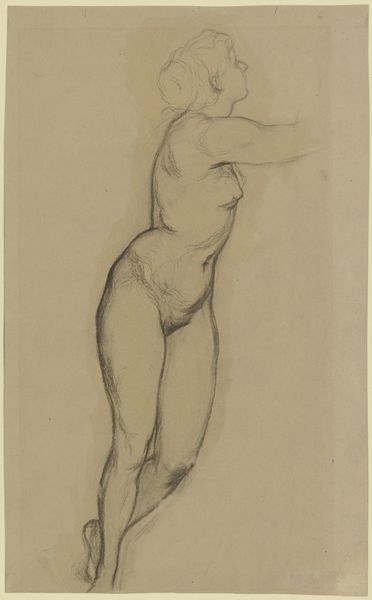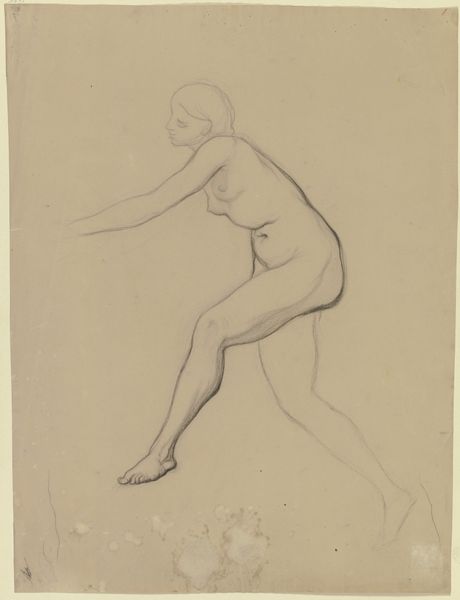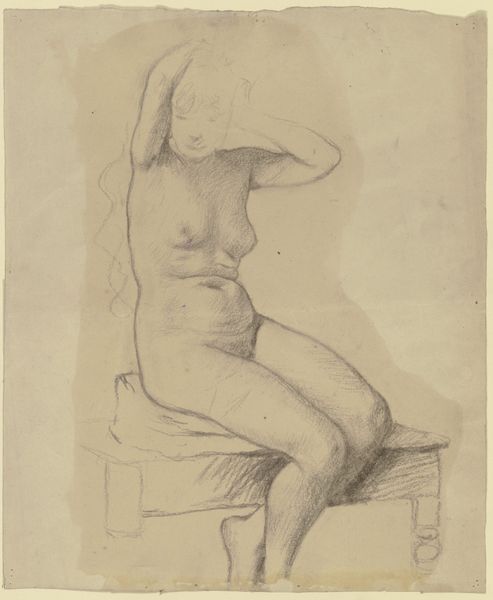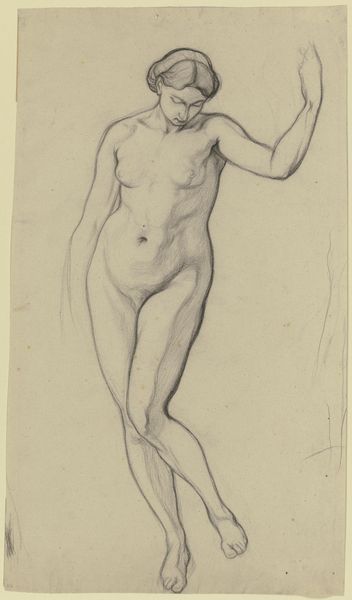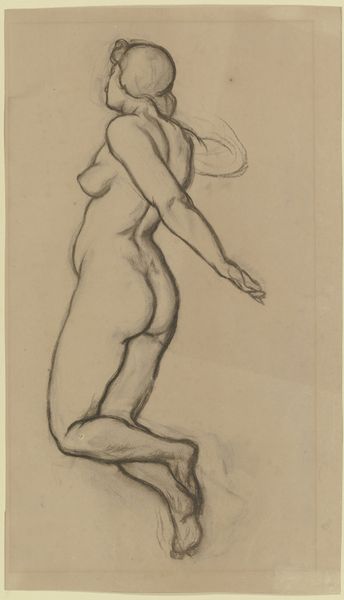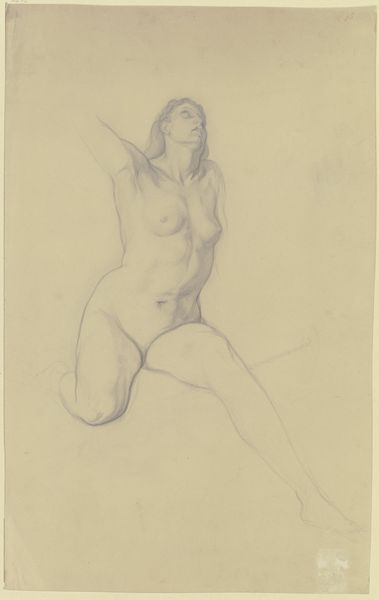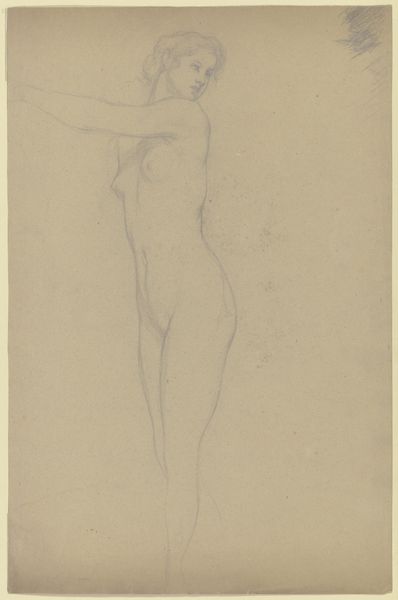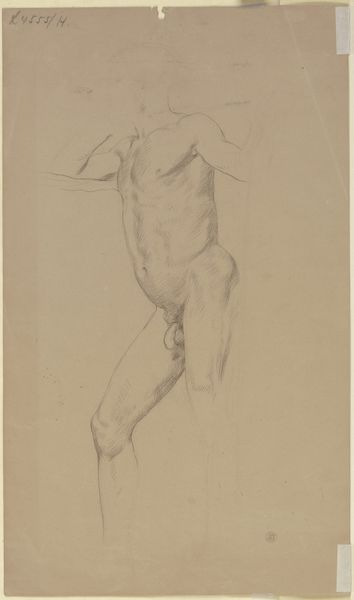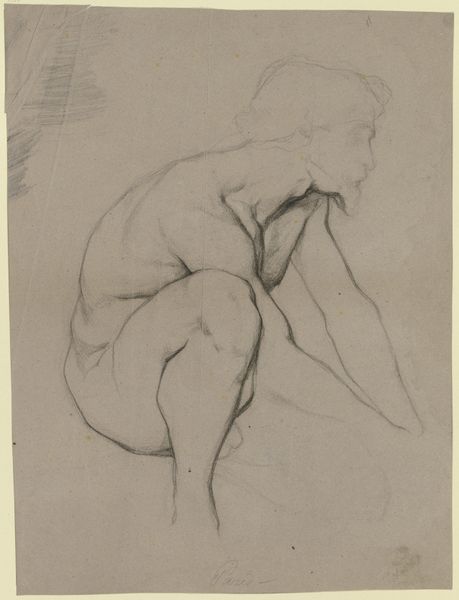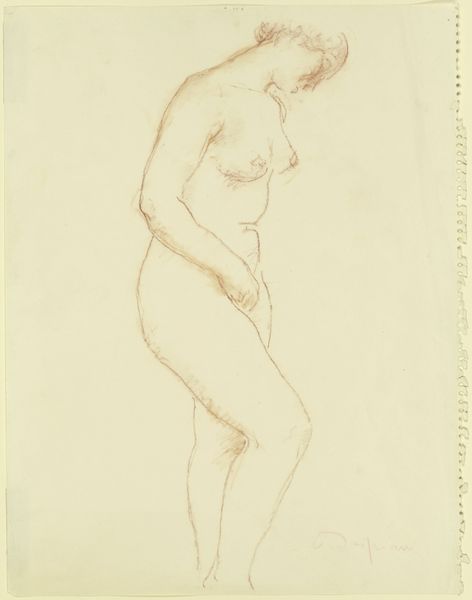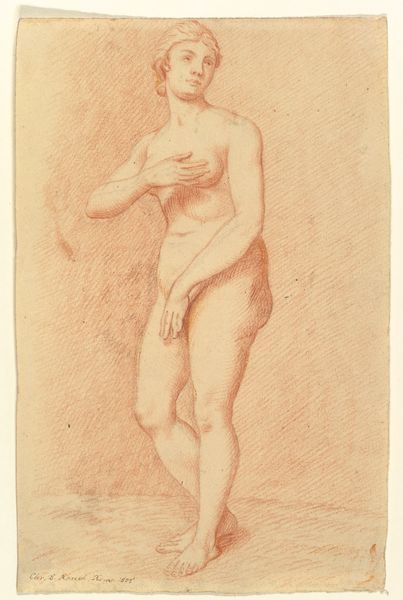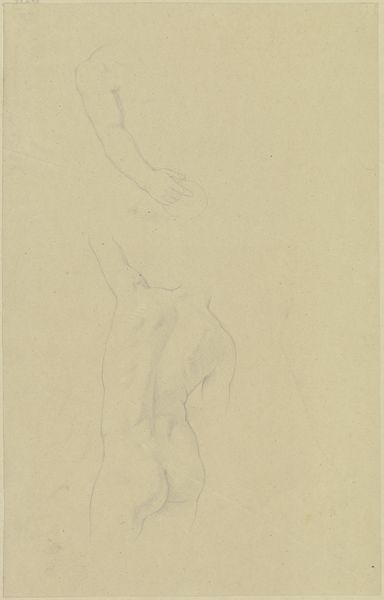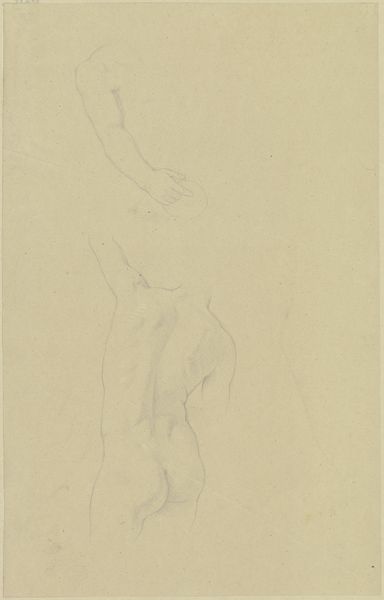
drawing, paper, pencil, chalk
#
pencil drawn
#
drawing
#
16_19th-century
#
charcoal drawing
#
paper
#
pencil drawing
#
pencil
#
chalk
#
nude
#
realism
Copyright: Public Domain
Curator: Looking at Otto Scholderer’s "Sitzender weiblicher Akt (_Quellnymphe_)" from around 1882-1883, what immediately strikes you? It's rendered with pencil, chalk and charcoal on paper, and held here at the Städel Museum. Editor: It’s quite somber, actually. The figure, drawn in rather muted tones, almost seems to fade into the paper. It gives a sense of quiet resignation or perhaps contemplation. Curator: Absolutely. We need to situate Scholderer’s work within the shifting landscapes of 19th-century artistic and social spheres. How did prevailing power dynamics shape the representation of the female nude at this time, for instance? This piece clearly invokes academic traditions, yet there's something…subdued about her presentation, lacking the overt theatricality often found in similar depictions of nymphs. Editor: Precisely, there is almost a lack of idealization which subverts the expected male gaze. It raises interesting questions about agency and control within the construction of gender and the dynamics of visibility of women's bodies at that time, even within artistic circles. Curator: We need to also ask how it plays into a rising sense of realism. Scholderer captures the human form with an unflinching eye, opting for naturalism over the hyper-idealized forms often associated with academic art. It becomes a meditation on how society began, subtly, to negotiate the role and representation of women in a changing world. The way her arms frame her face feels less like coquetry and more like a private moment. Editor: Right, it becomes more than just an exercise in artistic skill; it’s a window into the complex negotiation of identity. It allows viewers to look past conventional expectations to the subject’s complex experience of being human. And the title? Calling her a "Quellnymphe," a source nymph…that’s significant, isn't it? We are forced to see that identity as socially projected, in other words. Curator: A deliberate act, indeed. Thank you for lending your perspective. Editor: Always a pleasure to explore how these past conversations speak to current debates.
Comments
No comments
Be the first to comment and join the conversation on the ultimate creative platform.
